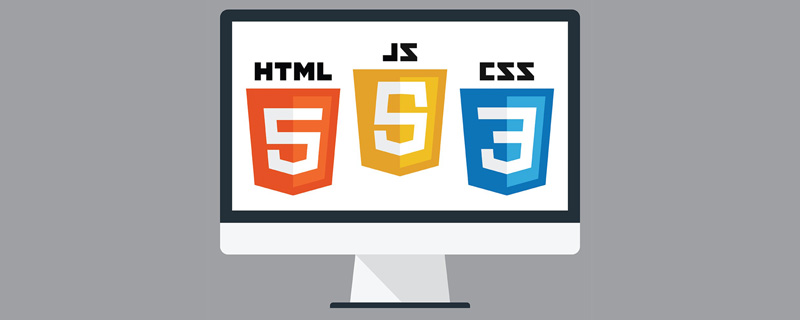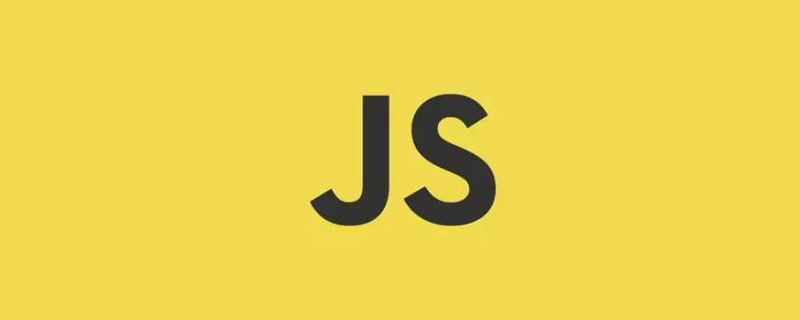 Web Front-end
Web Front-end JS Tutorial
JS Tutorial Comprehensive analysis of Bootstrap image carousel effect_javascript skills
Comprehensive analysis of Bootstrap image carousel effect_javascript skills1. Structural analysis
A carousel image mainly consists of three parts:
☑ Carousel of pictures
☑ Counter for carousel pictures
☑ Controller for carousel pictures
Step one: Design a container for carousel images. Use the carousel style in the Bootstrap framework, and define an ID value for this container, so that the data attribute can be used to declare the trigger later.
Step 2: Design a carousel image counter. Add a carousel picture calculator inside the container div.carousel, using the carousel-indicators style. Its main function is to display the playback order of the current pictures (if there are several pictures, place several li's). It is generally made using a sequential list:
<div id="slidershow" class="carousel"> <!-- 设置图片轮播的顺序 --> <ol class="carousel-indicators"> <li class="active">1</li> <li>2</li> <li>3</li> <li>4</li> <li>5</li></ol> </div>
Step 3: Design the carousel image playback area. In the entire effect of carousel images, the playback area is the most critical area. This area is mainly used to place images that need to be rotated. This area is controlled using the carousel-inner style, and is also placed within the carousel container, and each carousel image is placed through the item container:
<div id="slidershow" class="carousel"> <!-- 设置图片轮播的顺序 --> <ol class="carousel-indicators"> <li class="active">1</li> … </ol> <!-- 设置轮播图片 --> <div class="carousel-inner"> <div class="item active"> <a href="##"><img src="/static/imghwm/default1.png" data-src="http://images3.c-ctrip.com/rk/201407/ll580x145.jpg" class="lazy" alt=""></a> </div> <div class="item"> <a href="##"><img src="/static/imghwm/default1.png" data-src="http://images3.c-ctrip.com/dj/201408/zj/zj_580145.jpg" class="lazy" alt=""></a> </div> … <div class="item"> <a href="##"><img src="/static/imghwm/default1.png" data-src="http://images3.c-ctrip.com/dj/201408/zqgq_580145.jpg" class="lazy" alt=""></a> </div> </div> </div>
Step 4: Set carousel image description. Many carousel image effects also have their own titles and descriptions for each image. In fact, Carousel in the Bootstrap framework also provides similar effects. Just add the corresponding code at the bottom of the image in item.
<div id="slidershow" class="carousel"> <!-- 设置图片轮播的顺序 --> <ol class="carousel-indicators"> <li class="active">1</li> … </ol> <!-- 设置轮播图片 --> <div class="carousel-inner"> <div class="item active"> <a href="##"><img src="/static/imghwm/default1.png" data-src="http://images3.c-ctrip.com/rk/201407/ll580x145.jpg" class="lazy" alt=""></a> <!-- 图片对应标题和描述内容 --> <div class="carousel-caption"> <h3 id="图片标题">图片标题</h3> <p>描述内容...</p> </div> </div> … </div> </div>
Step 5: Design the carousel image controller. Many times carousels also have a forward and backward controller. This is achieved in Carousel through the carousel-control style combined with left and right. Among them, left means playing forward and right means playing backward. It is also placed in the carousel container:
<div id="slidershow" class="carousel"> <!-- 设置图片轮播的顺序 --> <ol class="carousel-indicators"> … </ol> <!-- 设置轮播图片 --> <div class="carousel-inner"> … </div> <!-- 设置轮播图片控制器 --> <a class="left carousel-control" href="" > <span class="glyphicon glyphicon-chevron-left"></span> </a> <a class="right carousel-control" href=""> <span class="glyphicon glyphicon-chevron-right"></span> </a> </div>
2. Declarative touch carousel image playback (no JS required)
<div id="slidershow" class="carousel slide" data-ride="carousel"> <!-- 设置图片轮播的顺序 --> <ol class="carousel-indicators"> <li class="active" data-target="#slidershow" data-slide-to="0"></li> <li data-target="#slidershow" data-slide-to="1"></li> <li data-target="#slidershow" data-slide-to="2"></li> </ol> <!-- 设置轮播图片 --> <div class="carousel-inner"> <div class="item active"> <a href="##"><img src="/static/imghwm/default1.png" data-src="http://files.jb51.net/file_images/article/201512/201512392831189.jpg?201511392841?x-oss-process=image/resize,p_40" class="lazy" style="max-width:90%" alt="Comprehensive analysis of Bootstrap image carousel effect_javascript skills" ></a> <div class="carousel-caption"> <h3 id="图片标题">图片标题1</h3> <p>描述内容1...</p> </div> </div> <div class="item"> <a href="##"><img src="/static/imghwm/default1.png" data-src="http://files.jb51.net/file_images/article/201512/201512392831189.jpg?201511392841?x-oss-process=image/resize,p_40" class="lazy" style="max-width:90%" alt="Comprehensive analysis of Bootstrap image carousel effect_javascript skills" ></a> <div class="carousel-caption"> <h3 id="图片标题">图片标题2</h3> <p>描述内容2...</p> </div> </div> <div class="item"> <a href="##"><img src="/static/imghwm/default1.png" data-src="http://files.jb51.net/file_images/article/201512/201512392831189.jpg?201511392841?x-oss-process=image/resize,p_40" class="lazy" style="max-width:90%" alt="Comprehensive analysis of Bootstrap image carousel effect_javascript skills" ></a> <div class="carousel-caption"> <h3 id="图片标题">图片标题3</h3> <p>描述内容3...</p> </div> </div> </div> <!-- 设置轮播图片控制器 --> <a class="left carousel-control" href="#slidershow" role="button" data-slide="prev"> <span class="glyphicon glyphicon-chevron-left"></span> </a> <a class="right carousel-control" href="#slidershow" role="button" data-slide="next"> <span class="glyphicon glyphicon-chevron-right"></span> </a> </div>

The declarative approach is achieved by defining the data attribute, which can easily control the position of the carousel. It mainly includes the following types:
1. data-ride attribute: take the value carousel and define it on carousel.
2. Data-target attribute: The value is the ID name or other style identifier defined by carousel. As shown in the previous example, the value is "#slidershow", and it is defined on each li of the carousel counter.
3. data-slide attribute: The value includes prev, next, prev means scrolling backward, and next means scrolling forward. This attribute value is also defined on the a link of the carousel controller, and the href value of the controller is set to the container. 4. The ID name of the carousel or other style identifier.
4. data-slide-to attribute: used to pass the subscript of a certain frame, such as data-slide-to="2", which can jump directly to the specified frame (the subscript starts from 0), the same definition on each li of the carousel counter.
It should be noted here that you can add a slide style to the #slidershow layer, and use pictures and picture switching effects to have a smooth feeling.
<div id="slidershow" class="carousel slide" data-ride="carousel"> ... </div>
In addition to data-ride="carousel", data-slide, and data-slide-to, the carousel component also supports three other custom attributes:

The following code implements "carousel without continuous loop" and "carousel time interval is 1 second".
<div id="slidershow" class="carousel" data-ride="carousel" data-wrap="false" data-interval="1000"> ...... </div>
3. JavaScript trigger method image carousel
HTML:
<div id="slidershow" class="carousel slide"> <!-- 设置图片轮播的顺序 --> <ol class="carousel-indicators"> <li class="active" data-target="#slidershow" data-slide-to="0">1</li> <li data-target="#slidershow" data-slide-to="1">2</li> <li data-target="#slidershow" data-slide-to="2">3</li> </ol> <!-- 设置轮播图片 --> <div class="carousel-inner"> <div class="item active"> <a href="##"><img src="/static/imghwm/default1.png" data-src="http://images3.c-ctrip.com/rk/201407/ll580x145.jpg" class="lazy" alt=""></a> <div class="carousel-caption"> <h3 id="图片标题">图片标题1</h3> <p>描述内容1...</p> </div> </div> <div class="item"> <a href="##"><img src="/static/imghwm/default1.png" data-src="http://images3.c-ctrip.com/dj/201408/zj/zj_580145.jpg" class="lazy" alt=""></a> <div class="carousel-caption"> <h3 id="图片标题">图片标题2</h3> <p>描述内容2...</p> </div> </div> <div class="item"> <a href="##"><img src="/static/imghwm/default1.png" data-src="http://images3.c-ctrip.com/dj/201408/zqgq_580145.jpg" class="lazy" alt=""></a> <div class="carousel-caption"> <h3 id="图片标题">图片标题3</h3> <p>描述内容3...</p> </div> </div> </div> <a class="left carousel-control" href="#slidershow" role="button"> <span class="glyphicon glyphicon-chevron-left"></span> </a> <a class="right carousel-control" href="#slidershow" role="button"> <span class="glyphicon glyphicon-chevron-right"></span> </a> </div>
JS:
$(function(){
$("#slidershow").carousel({
interval:2000
});
$("#slidershow a.left").click(function(){
$(".carousel").carousel("prev");
});
$("#slidershow a.right").click(function(){
$(".carousel").carousel("next");
});
});
Specific parameters can be set in the carousel() method, such as:

When using it, you can pass related parameters when initializing the plug-in, such as:
$("#slidershow").carousel({
interval: 3000
});
The carousel plug-in in the Bootstrap framework also provides users with several special calling methods. The brief description is as follows:
.carousel("cycle"): loop playback from left to right;
.carousel("pause"): Stop loop playback;
.carousel("number"): Loop to the specified frame, the subscript starts from 0, similar to an array;
.carousel("prev"): Return to the previous frame;
.carousel("next"):Next frame
The above is a detailed introduction to javascript image carousel. I hope this article will be helpful to everyone in learning javascript programming.
 如何使用JS和百度地图实现地图平移功能Nov 21, 2023 am 10:00 AM
如何使用JS和百度地图实现地图平移功能Nov 21, 2023 am 10:00 AM如何使用JS和百度地图实现地图平移功能百度地图是一款广泛使用的地图服务平台,在Web开发中经常用于展示地理信息、定位等功能。本文将介绍如何使用JS和百度地图API实现地图平移功能,并提供具体的代码示例。一、准备工作使用百度地图API前,首先需要在百度地图开放平台(http://lbsyun.baidu.com/)上申请一个开发者账号,并创建一个应用。创建完成
 js字符串转数组Aug 03, 2023 pm 01:34 PM
js字符串转数组Aug 03, 2023 pm 01:34 PMjs字符串转数组的方法:1、使用“split()”方法,可以根据指定的分隔符将字符串分割成数组元素;2、使用“Array.from()”方法,可以将可迭代对象或类数组对象转换成真正的数组;3、使用for循环遍历,将每个字符依次添加到数组中;4、使用“Array.split()”方法,通过调用“Array.prototype.forEach()”将一个字符串拆分成数组的快捷方式。
 如何使用JS和百度地图实现地图多边形绘制功能Nov 21, 2023 am 10:53 AM
如何使用JS和百度地图实现地图多边形绘制功能Nov 21, 2023 am 10:53 AM如何使用JS和百度地图实现地图多边形绘制功能在现代网页开发中,地图应用已经成为常见的功能之一。而地图上绘制多边形,可以帮助我们将特定区域进行标记,方便用户进行查看和分析。本文将介绍如何使用JS和百度地图API实现地图多边形绘制功能,并提供具体的代码示例。首先,我们需要引入百度地图API。可以利用以下代码在HTML文件中导入百度地图API的JavaScript
 如何使用JS和百度地图实现地图热力图功能Nov 21, 2023 am 09:33 AM
如何使用JS和百度地图实现地图热力图功能Nov 21, 2023 am 09:33 AM如何使用JS和百度地图实现地图热力图功能简介:随着互联网和移动设备的迅速发展,地图成为了一种普遍的应用场景。而热力图作为一种可视化的展示方式,能够帮助我们更直观地了解数据的分布情况。本文将介绍如何使用JS和百度地图API来实现地图热力图的功能,并提供具体的代码示例。准备工作:在开始之前,你需要准备以下事项:一个百度开发者账号,并创建一个应用,获取到相应的AP
 js中new操作符做了哪些事情Nov 13, 2023 pm 04:05 PM
js中new操作符做了哪些事情Nov 13, 2023 pm 04:05 PMjs中new操作符做了:1、创建一个空对象,这个新对象将成为函数的实例;2、将新对象的原型链接到构造函数的原型对象,这样新对象就可以访问构造函数原型对象中定义的属性和方法;3、将构造函数的作用域赋给新对象,这样新对象就可以通过this关键字来引用构造函数中的属性和方法;4、执行构造函数中的代码,构造函数中的代码将用于初始化新对象的属性和方法;5、如果构造函数中没有返回等等。
 用JavaScript模拟实现打字小游戏!Aug 07, 2022 am 10:34 AM
用JavaScript模拟实现打字小游戏!Aug 07, 2022 am 10:34 AM这篇文章主要为大家详细介绍了js实现打字小游戏,文中示例代码介绍的非常详细,具有一定的参考价值,感兴趣的小伙伴们可以参考一下。
 php可以读js内部的数组吗Jul 12, 2023 pm 03:41 PM
php可以读js内部的数组吗Jul 12, 2023 pm 03:41 PMphp在特定情况下可以读js内部的数组。其方法是:1、在JavaScript中,创建一个包含需要传递给PHP的数组的变量;2、使用Ajax技术将该数组发送给PHP脚本。可以使用原生的JavaScript代码或者使用基于Ajax的JavaScript库如jQuery等;3、在PHP脚本中,接收传递过来的数组数据,并进行相应的处理即可。
 js是什么编程语言?May 05, 2019 am 10:22 AM
js是什么编程语言?May 05, 2019 am 10:22 AMjs全称JavaScript,是一种具有函数优先的轻量级,直译式、解释型或即时编译型的高级编程语言,是一种属于网络的高级脚本语言;JavaScript基于原型编程、多范式的动态脚本语言,并且支持面向对象、命令式和声明式,如函数式编程。


Hot AI Tools

Undresser.AI Undress
AI-powered app for creating realistic nude photos

AI Clothes Remover
Online AI tool for removing clothes from photos.

Undress AI Tool
Undress images for free

Clothoff.io
AI clothes remover

AI Hentai Generator
Generate AI Hentai for free.

Hot Article

Hot Tools

SAP NetWeaver Server Adapter for Eclipse
Integrate Eclipse with SAP NetWeaver application server.

SublimeText3 Linux new version
SublimeText3 Linux latest version

SublimeText3 Mac version
God-level code editing software (SublimeText3)

Zend Studio 13.0.1
Powerful PHP integrated development environment

SublimeText3 Chinese version
Chinese version, very easy to use






